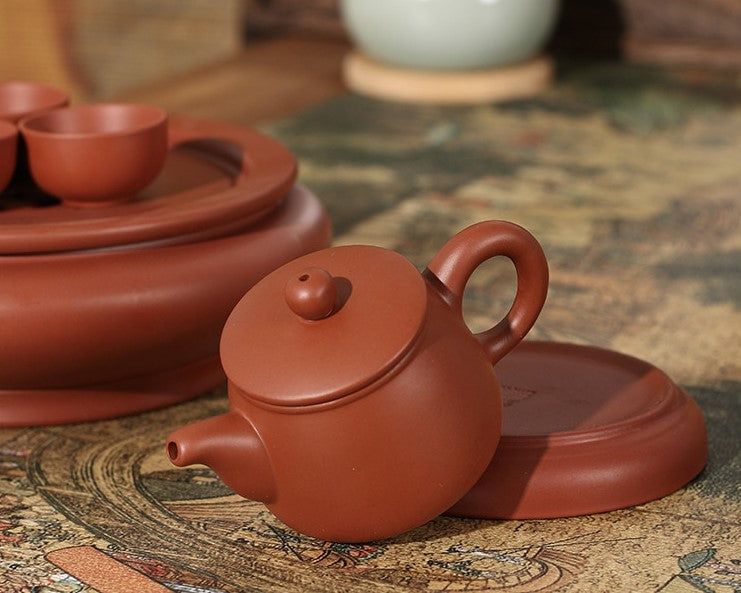
About Chaozhou Red Clay
Chaozhou red clay mainly originates from Fengxi(楓溪), while the areas of Fengtang(鳳塘), Fuyang(浮洋), and Longhu(龍湖) also produce abundant red clay.
The teapots made from Chaozhou red clay known as "red pots(紅罐)," possess a resistance to temperature changes, allowing them to withstand continuous temperature shifts between 20°C and 150°C without easily cracking. The material is stable, free of toxic substances and radioactive elements.

Chaozhou red clay is refined from mineral ores, with a clay mineral structure composed of quartz, mica, and kaolin. It is rich in silica (SiO2), alumina (Al2O3), and iron oxide (Fe2O3). Due to its abundance in minerals such as iron, zinc, magnesium, mica particles, sodium carbonate, and barium, paired with the excellent breathability of teapots and gaiwans made from this clay, tea brewed in them is particularly aromatic.

The raw material of Chaozhou red clay is a natural mineral substance, with the raw soil containing an extremely high level of iron oxide, giving it an earthy yellow color. After being fired at a high temperature of 1200°C, it turns a reddish-orange hue. The final step in crafting a red clay teapot involves using the same clay to create a smooth slurry, known as "makeup clay," which is then applied to the surface of the teapot. After firing, this results in a smooth, glossy, and translucent finish.

Chaozhou red clay tea sets—teapots, gaiwans, teacups, etc.—exhibit very distinct characteristics:
1. The vessels are typically small in size and designed for brewing Chaozhou-style Gongfu tea. Locals believe that smaller tea sets better "concentrate the aroma."
2. After years of craftsmanship improvements, modern Chaozhou red clay teapots, gaiwans, and teacups feature thin walls, offering good heat dissipation, excellent breathability, and preventing the tea from becoming stuffy, which helps enhance the tea's fragrance.
3. Chaozhou red clay teapots are meticulously crafted, emphasizing smooth water flow, clean cuts when stopping the pour, and ensuring no tea residue remains at the spout. The teapot lid fits tightly with the body of the pot.
